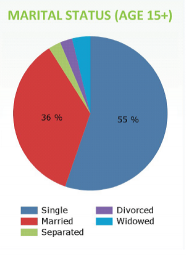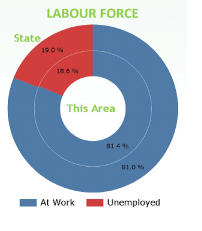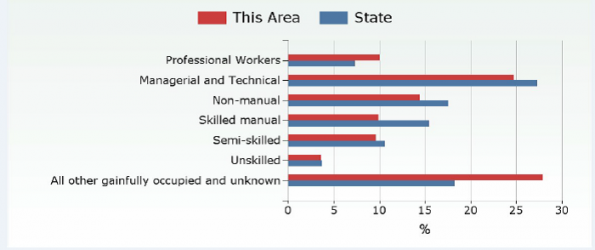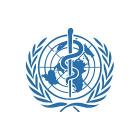Galway Stimulus Paper
The following stimulus paper by Evelyn Fanning and Fiona Donovan features the Healthy City experience, the paper also provides an overall profile of Galway, the fastest growing city in Ireland.
Introducing Galway
Galway is the capital of the West of Ireland. With a population of 75,529, it is the third largest and the fastest-growing city in the Republic of Ireland. Ranked as one of the 25 top destinations to visit in Europe by Trip Advisor, Galway is renowned for its vibrant lifestyle and numerous festivals, celebrations and events. A few of the big attractions include The Cúirt International Festival of Literature, the Galway Arts Festival, the Galway Races and the Oyster Festival are famous throughout Ireland and beyond. Galway is young at heart, with students making up 20% of the population here.
Even though it is one of the fastest growing cities in Europe, Galway has retained the friendly character and intimate feel that make it so popular. The city has experienced very rapid growth in recent years and has a strong local economy with complementary business sectors, including manufacturing industry, tourism, retail and distribution, education, healthcare and services that include financial, construction, cultural, and professional.
Galway City promotes social inclusion by proactively promoting the inclusion of people, groups and communities to participate fully in society through access to social, cultural and recreational opportunities. Galway City promotes social inclusion through a number of specific projects relating to the Barcelona Declaration Project, Disability Act, 2005, Local Government Anti Poverty Learning Network and the Galway City Anti-Racism Strategy.
Galway City Profile
To provide a profile of Galway City, below is key data for Galway City from the latest Census Data in 2011[1]
Age/Sex
In April 2011 Galway City had a population of 75,529, consisting of 36,514 males and 39,015 females. The population of pre-school age (0-4) was 4,869, of primary school going age (5-12) was 6,217 and of secondary school going age (13-18) was 4,735. There were 7,059 persons aged 65 years and over. The number of persons aged 18 years or over was 60,922.
Marital Status
Of the 63,036 persons aged 15 years and over, 34,856 were single, 22,474 were married, 1,668 were separated, 1,623 were divorced and 2,415 were widowed

Living Arrangements
There were 27,726 private households in Galway City in April 2011, of which 6,979 were single person households. Of the 15,997 families in the area, 5,485 were couples with no children. The average number of children per family was 1.2 compared with 1.4 nationally.
Households by Comparison

Migration and Nationalities
85.6 per cent of the usually resident population aged over 1 lived at the same address one year before the census. A further 8.7 per cent lived elsewhere in the same county, 3.0 per cent lived elsewhere in the State while 2.6 per cent lived outside the State twelve months before the census on April 10, 2011. Non-Irish nationals accounted for 19.4 per cent of the population of Galway City compared with a national average figure of 12.0 per cent. Polish (4,096 persons) were the largest group, followed by UK nationals (1,486 persons).
Languages
31,866 persons could speak the Irish language and of these 9,158 spoke the language daily. 13,798 persons spoke a language other than Irish or English at home and of these 2,020 could not speak English well or at all. Polish was the most common foreign language spoken at home with 4,070 speakers.
Labour Force
There were 38,791 persons aged 15 years and over in the labour force and of these, 81.4 per cent (31,557 persons) were at work. The unemployment rate for Galway City was 18.6 per cent compared with a national average rate of 19.0 per cent. Of the 24,245 persons aged 15 years and over who were outside the labour force, 46.4 per cent were students, 16.4 per cent were looking after the home/family and 26.3 per cent were retired.

Of the 31,557 workers enumerated in Galway City, 4,873 worked outside the area. The daytime working population (resident and non-resident) of Galway City was 40,698 with professional services being the largest industry.
Education
Of those aged 15 years and over whose full-time education had ceased, 9.9 per cent were educated to at most primary level only; a further 45.1 per cent attained second level while 45.0 per cent were educated to third level.
Social Class Comparison

Travel to Work
The most popular means of travelling to work was by car (driver) with this mode accounting for 57.7 per cent of all journeys. 1,863 persons commuted using public transport (bus or rail). The average journey time was 20 minutes and 11.7 per cent of workers faced a commuting time in excess of 30 minutes.
Disability and Carers
8,989 persons had a disability in April 2011, of whom 2,450, representing 27.3 per cent of the total, were aged 65 years and over. 2,655 persons (974 males and 1,681 females) provided regular unpaid personal help for a friend or family member with a long-term illness, health problem or disability. 18.5 per cent of these provided care for more than 6 hours per day.
Housing, Internet and Cars
77.4 per cent of households lived in houses or bungalows while a further 22.5 per cent lived in apartments, flats or bedsits. 13,520 dwellings (48.8 per cent) were owner occupied while 13,716 dwellings (49.5 per cent) were rented. 27.2 per cent of the dwellings in Galway City were built in the ten years before the census. The average number of persons per household was 2.6 compared with 2.7 nationally. 72.8 per cent of households had broadband connectivity compared with 63.8 per cent nationally. 32.0 per cent of households had two or more cars.
General Health
In Galway City, 66,449 persons stated they were in very good or good health, representing 88.0 per cent of total persons. This compares to 88.3 per cent of total persons nationally. 1,113 persons stated they were in bad or very bad health, representing 1.5 per cent of total persons in Galway City. Again this compares with 1.5 per cent of total persons nationally.
|
|
|
Galway Cities Participation in the World Health Organization European Healthy Cities Programme
Galway City is a designated World Health Organization (WHO) European Healthy City committed to improving the health and wellbeing of people living and working in Galway City. As part of this WHO programme, Galway City is working on six strategic goals which have much in common with the work of PASCAL and are as follows:
- To promote policies and action for health and sustainable development at the local level and across the European Region, with an emphasis on the determinants of health, poverty and the needs of vulnerable groups.
- To increase accessibility of the WHO Healthy Cities Network to all Member States of the European Region.
- To promote solidarity, cooperation and working links between European cities and networks and with cities and networks participating in the healthy cities movement in other WHO Regions.
- To strengthen the national standing of Healthy Cities in the context of policies for health development, public health and urban regeneration.
- To play an active health advocacy role at European and global levels through partnerships with other agencies concerned with urban issues and networks of local authorities.
- To generate the policy and practice know-how, the good evidence and the case studies for promoting health to all cities in the Region.
The WHO sets core themes and objectives for cities, which determine the agenda for each five year phase. Cities are expected to develop programmes for each theme that are appropriate for local circumstances and also integrate work on the themes.
As part of the current phase of the programme which ends in December 2013, Cities are working on progressing 3 core themes which are interrelated, interdependent and mutually supportive. These core themes include
- Caring & Supportive Environments
- Healthy Living
- Healthy Urban Environment & Design
Under each theme an example is outlined on how Galway City has contributed to sustainable healthy cities through its participation in the WHO Healthy Cities Programme.
Theme 1 - Caring & Supportive Environments
“A healthy city should be above all a city for all its citizens, inclusive, supportive, sensitive and responsive to their diverse needs and expectations”[2]. One of the issues that Galway has been working on under this theme is the development of Age-friendly cities. This is centred on introducing policies and holistic action plans addressing the health needs of older people that emphasize participation, empowerment, independent living, supportive and secure physical and social environments and accessible services and support.
According to the WHO making cities and communities age-friendly is one of the most effective policy approaches for responding to demographic ageing. The WHO is leading the way globally on age-friendly cities and its comprehensive guide Global Age-friendly Cities is a leading light for the world on ageing[3].
Planning for environmentally, economically and socially sustainable communities needs to take account of the ageing of populations and the role older people can play as a key resource in meeting their specific needs. Creating age-friendly cities and communities goes beyond active and positive living and health needs, public health outcomes and the persistence of health inequalities. Through the adoption of an age-friendly approach to planning and decision making in all areas of public life, we are actively creating an
environment that facilitates citizen’s social engagement regardless of their age.
Galway Healthy Cities facilitated extensive consultation with older people on the extent to which Galway is age friendly city. For further details on this please click here. Work is currently progressing with Ageing Well Network and other partners in developing an age friendly strategy for the City and County and linking with the WHO Global Network of Age Friendly Cities and Communities[4]
Galway Healthy Cities Project recognises the synergistic work of the WHO European Healthy Cities Network and the WHO Global Network of Age-Friendly Cities and Communities, and endorses the principles and core values related to equity, empowerment, partnership, solidarity and sustainable development contained in the Zagreb Declaration for Healthy Cities. (Zagreb Declaration for Healthy Cities. WHO 2009)[5]. Actions to make Cities and Communities age-friendly can reinforce many dimensions of the Europe 2012 - 2020 strategy towards smart, sustainable and inclusive growth.
There is significant opportunity to build on local and regional channels and networks between the various cities and communities involved in both Healthy Cities and Age Friendly Cities Network to stimulate and support advances in the development of neighbourhoods and communities for all ages that are diverse, safe, inclusive and sustainable.
Theme 2 Healthy Living
Community Gardens
Through the Galway Healthy Cities Project the first community garden was set up in Ballybane in 2006. The project is multidisciplinary and involves different agencies from the education, health, local government and community and voluntary sector. This includes Galway City Council who provide the land, some funding and access to their in house garden centre. HSE Health Promotion who provide some funding and support and Galway City VEC, who provide tutors and support. In addition, the local Community Development Project and the local community were key in the recruitment and retention of local volunteers and the continuous promotion of the garden through open days and training.
In 2007, a small scale study was undertaken to examine the impact of involvement in the Ballybane community garden project on the general health and wellbeing of participants. The study found an increase in healthy food consumption and also an increase in vitality and social functioning. As a result, community gardens have been introduced on a phased basis in Ballinfoile and Westside and there is currently a garden being planned for Doughiska. All of these areas have been strategically selected as are deemed disadvantaged by the Government.
A key aspect of the gardens is learning and social interaction. To maximize resources and leverage knowledge, a network group – Let’s Get Galway Growing – was set up in 2011. The aim of Let's Get Galway Growing is to connect all the community gardens in Galway, maximise use of resources and share knowledge, increase awareness of the gardens, increase involvement of the local community and provide information on developments and events. To view the gardens and work visit www.letsgetgalwaygrowing.com
This network is represented by 2-3 volunteers from each garden who meets in October to review the season and February to plan the season. In addition a networking and learning event is held in April. This learning event provides an opportunity for the gardens to network and share information and knowledge and also expands their knowledge. In 2013 the event included workshops on herb planting and bee keeping.
Prevention and Reduction of Alcohol-Related Harm
There is growing evidence that documents the impact of alcohol-related harm not just on the individual drinker and their family but on the wider society e.g. social disorder, vandalism, violence and other crime, reduced community amenity, absenteeism and reduced work performance. The estimated cost of excessive alcohol consumption in Ireland is €3.7 billion a year due to health, crime/public older and other costs.
When the Galway Healthy Cities Project asked key agencies and groups “Do we need a strategy to reduce alcohol-related harm in Galway City” we received a clear yes with a strong need and desire to reduce alcohol-related harm. The Galway Health Cities Alcohol Forum, which is a multidisciplinary group, took on the task of developing a five year strategy to prevent and reduce alcohol related harm.
In 2012 this group initiated the process of developing the strategy. All key stakeholders were invited to participate in a consultation session where local services presented on the impact of alcohol related harm in the city. A wide range of agencies, groups and individuals participated in the consultation process to develop this strategy. This included submissions, emails, phone calls, attending meetings and providing feedback on the draft strategy. The five-year strategy (2013 – 2017) to prevent and reduce alcohol-related harm is informed by research on effective approaches to tackling alcohol-related harm and focuses on four key areas:
A) Prevention
B) Supply, Access & Availability
C) Screening, Treatment & Support Services
D) Research, Monitoring & Evaluation
These areas are in line with the National Drugs Strategy. To view the strategy visit www.galwayalcoholstrategy.ie
Community mobilization and commitment from all agencies and groups is key to the effectiveness of the strategy. During the consultation stakeholders were asked to identify actions for the city and to ascertain how they could participate and commit to the implementation of the strategy. Further engagement with individuals, groups and agencies will continue throughout its lifetime. It will be implemented on an annual basis through the development of an annual action plan which will be overseen by the Galway Healthy Cities Alcohol Forum. At the end of each year an update report will be compiled along with the action plan for the following year identifying the key stakeholders for each action.
Through maintaining and further developing this partnership approach, we are confident that together we can make a real difference in preventing and reducing alcohol-related harm across Galway City. The anticipated affect of implementing this strategy over the next five years includes improved health, wellbeing and quality of life for people living in Galway City, reduced harmful use of alcohol, reduced alcohol-related harm, reduced incidents of alcohol related crime and antisocial behaviour and increased access to support services for those affected by others alcohol consumption.
Theme 3 Healthy Urban Environment & Design
Healthy urban planning consists of integrating health considerations into urban planning processes, programmes and projects and establishing the necessary capacity and political and institutional commitment to achieve this goal. Healthy urban design consists of creating socially supportive environments and an environment that encourages walking and cycling. It also focuses on enhancing cities’ distinctive and multifaceted cultural assets in urban design and promoting urban designs that meet all citizens’ expectations for safety, accessibility, comfort and active living.
A sub group was set up to progress the WHO core theme of Healthy Urban Planning & Design, with representatives from Planning, Architecture, Transport and Health. The purpose of the this group is to provide a space to learn, network and create tools to enhance the healthy urban environment and design of Galway City for the benefit of all. The aims of this group include providing opportunities for learning about Healthy Urban Environment & Design, sharing thinking on Healthy Urban Environments, using local data to guide how we make decisions and developing tools and resources to support Healthy Urban Environments.
The target groups include policy and decision makers in all topic areas, Councillors, Strategic Policy Committees, community and voluntary groups and the general public who have an interest in this area.
Over the past 18months Galway Healthy Cities have organised three learning events. These include
- Infrastructures for Health Workshop (February 2012)
- Connecting People and Places Workshop (September 2012)
- Creating Active Spaces for All Workshop (June 2013)
All three workshops had a good attendance from a wide range of organisations, departments and groups which demonstrates the interest and relevance of Healthy Urban Environment workshops. The workshops provided a valuable space to reflect and discuss developments and issues in relation to healthy urban environment and design in Galway City. The ideas and suggestions from the workshops are recorded and used where relevant to engage with key stakeholders in developing innovative and effective projects for healthy urban planning and design. Galway Healthy Cities will continue to provide a space for relevant stakeholders to learn, network and create tools to enhance the healthy urban environment and design of Galway City for the benefit of all.
Concluding remarks
Cities participating in PIE have much in common with the aims and objectives of Cities participating in the WHO Healthy Cities Programme with both creating healthier urban populations through the implementation of sustainable practices that improve environmental standards. There is significant opportunity to forge greater links between Cities and communities involved in a range of different programmes with cross cutting themes. We would welcome the opportunity to build on local regional, national and international networks between the various cities and communities involved in both Healthy Cities and PIE and actively promote a shared learning space to stimulate and support advances in the development of neighbourhoods and communities for all ages that are diverse, safe, healthy, inclusive and sustainable.
[1] Census 2011 Area Profile for Galway City
http://census.cso.ie/areaprofiles/areaprofile.aspx?Geog_Type=CTY&Geog_Code=26
[2] World Health Organization Regional Office for Europe (2009); Phase V (2009-2013) of the European Healthy Cities Network Goals and Requirements
http://www.euro.who.int/__data/assets/pdf_file/0009/100989/E92260.pdf
[3] WHO Global Network of Age-friendly Cities and Communities
[4] WHO Global Network of Age-friendly Cities and Communities
[5] WHO Regional Office for Europe (2009) Zagreb Declaration for Healthy Cities (2009)
http://www.euro.who.int/__data/assets/pdf_file/0015/101076/E92343.pdf
 Printer-friendly version
Printer-friendly version- Evelyn Fanning's blog
- Login to post comments
- 373 reads







